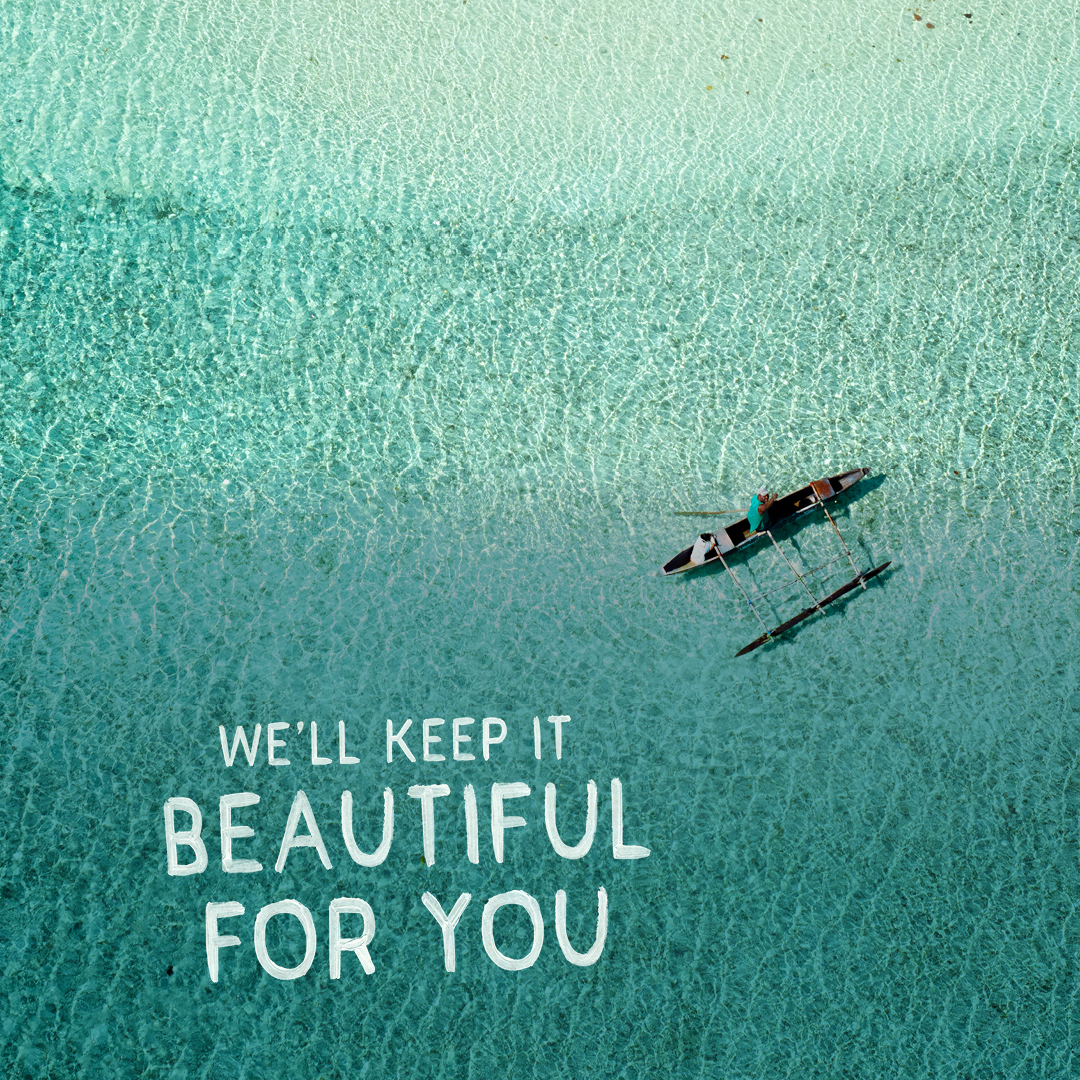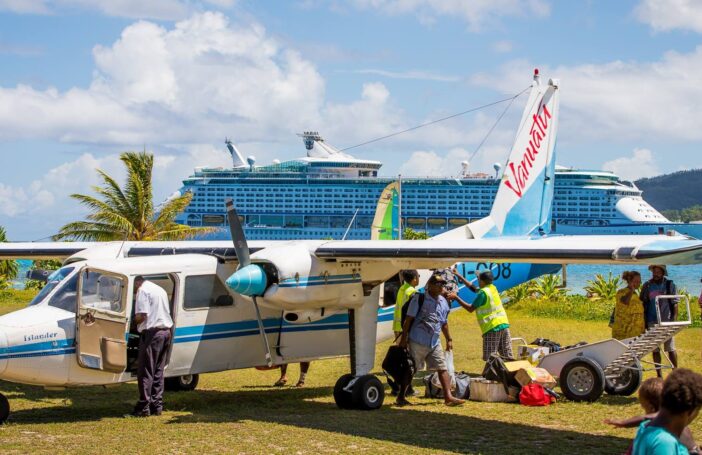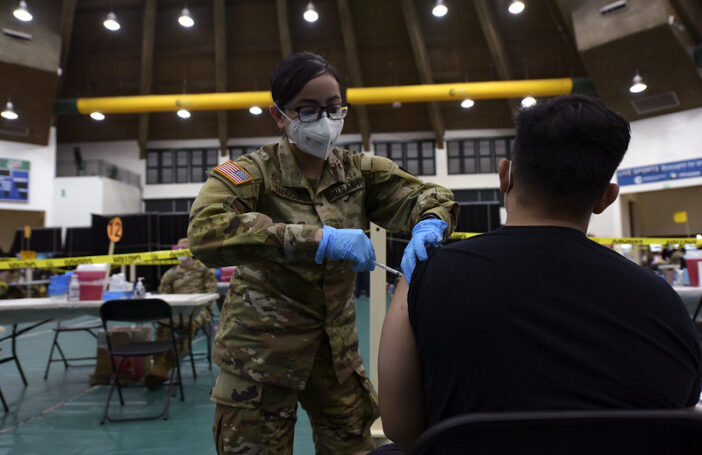In mid-January 2020, Vanuatu formed a National Coronavirus Taskforce to begin preparing the country for the growing global health pandemic. The gravity of the situation was not fully absorbed by the local tourism industry until the following month, when disturbing reports of high COVID-19 infection rates and deaths spread rampantly through social media, inciting panic in the general public.
Around this time, our boutique resort, The Havannah, reinforced our international standards of workplace hygiene and safety, and boosted staff awareness of virus transmission risk. We thought this would be sufficient preparation for a pandemic, not anticipating the major hit to come to the tourism industry as international flights began to dwindle away to nothing with increasing border restrictions.
Australia is one of Vanuatu’s major markets. The Australian Government’s updated travel advisories in mid-March rapidly changed this market situation. When Australia closed its borders to international travel, our resort went to zero income in three days. Vanuatu also closed borders effective 26 March under a state of emergency. This was extended for a further 30 day period after category 5 Tropical Cyclone Harold wreaked widespread destruction on Vanuatu’s central and northern islands in early April.
Last week, the Vanuatu Tourism Office and the Department of Tourism released the results of a joint survey on COVID-19 and TC Harold impacts on the tourism industry. A staggering 70% of tourism jobs were lost in the past six weeks. As the backbone of Vanuatu’s economy, tourism has traditionally provided approximately 40% of national GDP. So, Vanuatu has no international tourists and severely reduced revenue from the industry.
From a business perspective, how long could the resort and our 80+ staff survive with an anticipated 3-9 months of no income? Staff reductions, halts on expenditure: all aspects of the business were scrutinised to survive and continue to support the livelihoods of our staff and their families. Unlike the post-disaster business relief packages during TC Pam in 2015, business interruption insurance does not offer sufficient relief. Neither can banks guarantee business loan support.
From a health perspective, the stringent prevention measures taken under Vanuatu’s current state of emergency appear to be working: Vanuatu is Coronavirus free!
However, Vanuatu is rapidly approaching an economic crisis that could bring about a prolonged humanitarian crisis on an unprecedented scale. No post-disaster response and recovery experience has equipped us for a global health pandemic, not least because we cannot see the end, unlike during a cyclone.
The Vanuatu Government has acted impressively throughout these challenging times. By quickly closing borders, dealing with TC Harold response and developing an VT4billion (AU$40 million) economic stimulus package to sustain employment, the government has placed Vanuatu in a good position to deal with the next challenge: Vanuatu’s economic recovery in a COVID-19 world.
However, government revenue is rapidly decreasing due to the impact on the tourism sector. The stimulus package draws down significantly on government reserves until June. The national superannuation fund, the Vanuatu National Provident Fund, recently closed its COVID-19 interest-free loan scheme after paying out a staggering VUV1.5 billion (AU$15 million) to its members to support the government’s efforts to stimulate the local economy. However as individual drawdowns are not able to exceed VUV100,000 (AU$1,300), the ‘mini boom’ in the local economy will be short-lived.
Vanuatu’s newly elected government is leading planning for a longer-term economic recovery stage. Economic diversification is the obvious step to reduce reliance on a single sector like tourism. However, there are gains still to be made from facilitating a tourism sector recovery to offer domestic employment and much needed revenue for the government. This recovery can then provide a springboard from which diversification can then proceed.
So, what should Vanuatu be considering in its tourism sector recovery plan?
1. Facilitate verified testing and additional resources to strength public health
Vanuatu must prove it is virus free and ensure safe measures are in place to deal with cases if COVID-19 arrives on our shores.
2. Government subsidies for the national airline to sustain international routes
While Air Vanuatu has been struggling financially it is the primary avenue for bringing tourists back to Vanuatu, and for facilitating much-valued labour mobility for Vanuatu to Australia and New Zealand. Targeted subsidies to support even a reduced passenger schedule would not only enable tourists to visit Vanuatu, but also support domestic travel and touristic reach to islands beyond Efate, where Port Vila is situated.
3. Inclusion of Vanuatu in any Pacific, Australia, New Zealand ‘travel bubble’
Australia and New Zealand have recently been discussing a trans-Tasman travel bubble. The regional travel industry and governments are calling for their inclusion in a more comprehensive Pacific ‘travel bubble’, noting the primary and lucrative short-haul tourism markets to the Pacific originate in Australia and New Zealand.
The Vanuatu Government is showing good foresight in reaching out to Australia and New Zealand to formally request being included in the ‘travel bubble’ discussions. This would support their economic recovery and development commitments as well as place Vanuatu in a respectful position to leverage economic opportunities for its people. Being part of a trans-Pacific travel bubble would help economic recovery considerably.
Vanuatu’s COVID-free status is a great asset for attracting international markets during this time. Of course, international travellers would need to be heavily screened to maintain this, and the Vanuatu Government recently assured the public that by 11 May (when the state of emergency ends) it will have all health facilities in place to tackle any potential cases.
And, along with our tourism colleagues across Vanuatu, we hope you can visit our country soon, knowing that we are keeping it beautiful for you.
This post is part of the #COVID-19 and the Pacific series.





Great article Liz, and so timely. We look forward to the resort and Vanuatu tourism recovering, within a South Pacific travel bubble as you suggest.
Nicely written. A few facts that do need clarifying. Tourism has never been 40% of GDP. Tourism earnings divided by GDP is about 40% but that is meaningless nonsense as GDP is calculated based on value adding .
Using just the math and not random numerators and denominators – tourism contributes at best about 10% of Vanuatu’s GDP. Tourism is also not the major source of Vanuatu’s forex nor is it a major source of revenue for the budget.
If one includes Air Vanuatu it is however one of the most heavily subsidised industries in the country. This is not intended to denigrate the industry but to provide some perspective. Tourism like most industries in Vanuatu is small and fragile and the few success stories are in the niche products like Havannah, Eratap and small bungalows. This is possibly the only way to also grow the industry in the future. But that is a discussion that cannot be had in country as long as the narrative continues to be based on the misconception of the importance of local casino / hotels and a hugely inflated misconception of the contribution of the industry to the country as a whole.
I agree it’s important to have this perspective and to recognise that there are various aspects to this. There is no denying that tourism provides a large number of salaried jobs in Vanuatu, predominantly in Port Vila but also on Santo and Tanna as well. It’s hard to see where alternative employment opportunities will arise for the people who have lost those jobs elsewhere in the economy in the immediate to short term.
What’s not been discussed here is the place of cruise tourism. A restart of this could well be problematic from a health risk perspective and associated community perceptions. But it’s important to be clear-eyed about its place ion the overall scheme of things. It provides income earning opportunities for people in low socio-economic groups (taxi and bus drivers, people who sell souvenirs, hair braiders, etc). Cruise ship tourists do not spend much per capita (and they don’t spend it at resorts or in restaurants and cafes by and large) but by virtue of the volume they inject a significant amount into the economy. They also create a base load for tour operators which creates employment, although often on a casual basis.
So long story short – this is not a one-dimensional problem and it will need more than a one-dimensional solution whether for Vanuatu or other countries in the Pacific that see tourism as part of their development pathways.
The multi-dimensional challenges are an important point, and it’s good to also to think about the future of work/employment opportunities for the population. Perhaps this will bring not only a shift in the national tourism strategy (i.e. niche marketing, restricted cruise tourism etc) to maintain the signigicant contribution to Vanuatu’s GDP but also a reinvigorated focus on upskilling a population for the economic opportunities yet to be created …. and the time to start is now.
This claim is at odds with the the Vanuatu Government’s own figures, Nik. The Government’s Trade Policy Framework Update 2019-2025, produced in partnership with the Enhanced Integrated Framework and Australian Aid, says tourism earned VUV27.1 billion or the equivalent of 30% of Vanuatu’s GDP in 2017. The same publication also says that International tourism produced 75% of export earnings in 2017, and asserts that tourism is “the most important economic sector in Vanuatu in terms of employment and contribution to GDP”. No GDP data is available yet for 2018 and 2019, but in 2019, approximately 20,000 more tourists visited Vanuatu than in 2017, so it is possible that tourism’s contribution to GDP was even higher in 2019. If we include tourism’s indirect contribution, a figure of 40% is quite plausible.
Let me put this another way, if I did the same calculation for kava and Government (i.e. earnings from kava plus Government) it would far exceed 100% of GDP – does that mean Tourism actually has a zero impact? No because earnings and GDP are calculated differently so any ratio of the two is utterly meaningless.
There is only one definitive calculation that has ever been done on this for Vanuatu and that was by the VNSO and the Australian Bureau of Statistics that put the figure at about 8% for Tourism. I would trust VNSO and ABS above any consultant report.
This is my point, you can hardly expect decent policy outcomes if even the most basic numbers are wrong.
Please let this be for those beautiful people of Vanuatu. Being an Australian resident and visitor to their home it only has to be the best for their recovery. Hoping all goes well with these solutions.
Thanks madam 😁😁😁😁😁👏👏👏
Very well written Liz.. excellent. I have passed on to my key supporters here
in the US..though it might be a while before we are able to visit, you have my support and wishing to best for you, Greg and the family.
Let’s hope for the best outcome and have your resort as beautiful as ever
Very well written explaining in clear and simple language the long term problems that Vanuatu will face and potential ways to make the future bright again.
The only feasible direction to take . . . well worth pooling available resources to make this a reality !!!